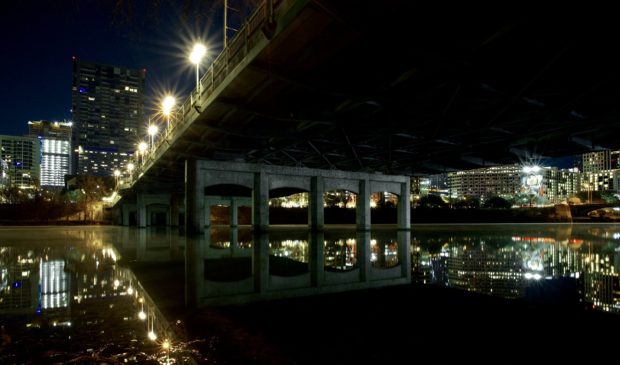Creative spaces, affordable homes possible for two city-owned East Austin sites
Wednesday, September 21, 2022 by
Chad Swiatecki The city’s Housing and Planning Department has identified parts of city-owned parcels that could incorporate creative spaces and affordable housing for artists, with development plans likely to be handled by the Austin Economic Development Corporation.
Mandy De Mayo, deputy director of the housing department, shared some basic details of the two projects at Monday’s Arts Commission meeting during a discussion about the need for the city to create affordable housing for artists.
The two sites are blocks 16 and 18 on East 11th Street, and an 18-acre piece of land off Riverside Drive in Southeast Austin that was recently purchased from Austin Energy. De Mayo said her department has a memorandum of understanding with the EDC for both redevelopment projects, noting that the second site is large enough to have significant affordable housing along with other community benefit uses that could include creative spaces.
While noting that the average home price in Austin has climbed to more than $600,000 in recent years, De Mayo said that as of 2020, nearly 10,000 units of varying levels of affordability were constructed a half-mile or less from Imagine Austin’s designated centers, corridors and high-opportunity areas. That still leaves the city roughly 30,000 housing units shy of its 2028 goal for new affordable homes, according to data presented during the meeting.
Patrick Russell, manager of the Real Estate Development Division, shared details of how the city has used the $250 million for affordable housing approved by voters in 2018, including using $100 million for property acquisition that could later be used for public-private partnerships.
Russell said several of those projects have significant spaces dedicated for creative use along with many of their units being priced at deeply affordable levels that could be accessible for artists, with organizations such as Six Square helping to connect developers with creatives.
“For many of the developments I’ve been involved in I see the development partners intentionally reaching out to local artists, organizations or groups and ask if they can pay them for their art to hang it on their walls,” he said. “You always hope when they’re done with construction there’s a little extra money left over. Certainly when they get toward the end and there’s something left, we help them think about creative ways to spend it.”
Commissioner Lulu Flores said the city should try to develop substantial property tax savings for property owners who agree to rent homes to artists or other income-restricted groups.
“I would appreciate the idea of maybe incentivizing homeowners or rental owners to maybe rent their places below market value to artists or people who can’t afford the prices that are being forced on us by property taxes,” she said. “If you can do some kind of tax rebate, that might help appeal to people who might want to rent to artists or folks who can’t afford what’s out there in the rental market.”
De Mayo said a recent program created with Community Powered Workshop has had success in encouraging potentially affordable accessory dwelling units by providing fee waivers to owners who agree to rent the spaces at below-market rates for at least five years.
Commissioner Acia Gray said planning steps need to be considered as the city adds affordable housing stock, to prevent artists and others living in lower-cost homes from being removed from centers of activity.
“My brain is going around … thinking about the fact there are artists in Austin who not only can’t afford to find a place to live, but can’t find a place to do their art. Not many artists are graphic artists, or visual artists, they’re performing artists and musicians, and I would hope as well that in the plan going forward there are blocks of affordable housing that aren’t isolated, because we need communities with performance and other spaces.”
Photo made available through a Creative Commons license.
The Austin Monitor’s work is made possible by donations from the community. Though our reporting covers donors from time to time, we are careful to keep business and editorial efforts separate while maintaining transparency. A complete list of donors is available here, and our code of ethics is explained here.
You're a community leader
And we’re honored you look to us for serious, in-depth news. You know a strong community needs local and dedicated watchdog reporting. We’re here for you and that won’t change. Now will you take the powerful next step and support our nonprofit news organization?










